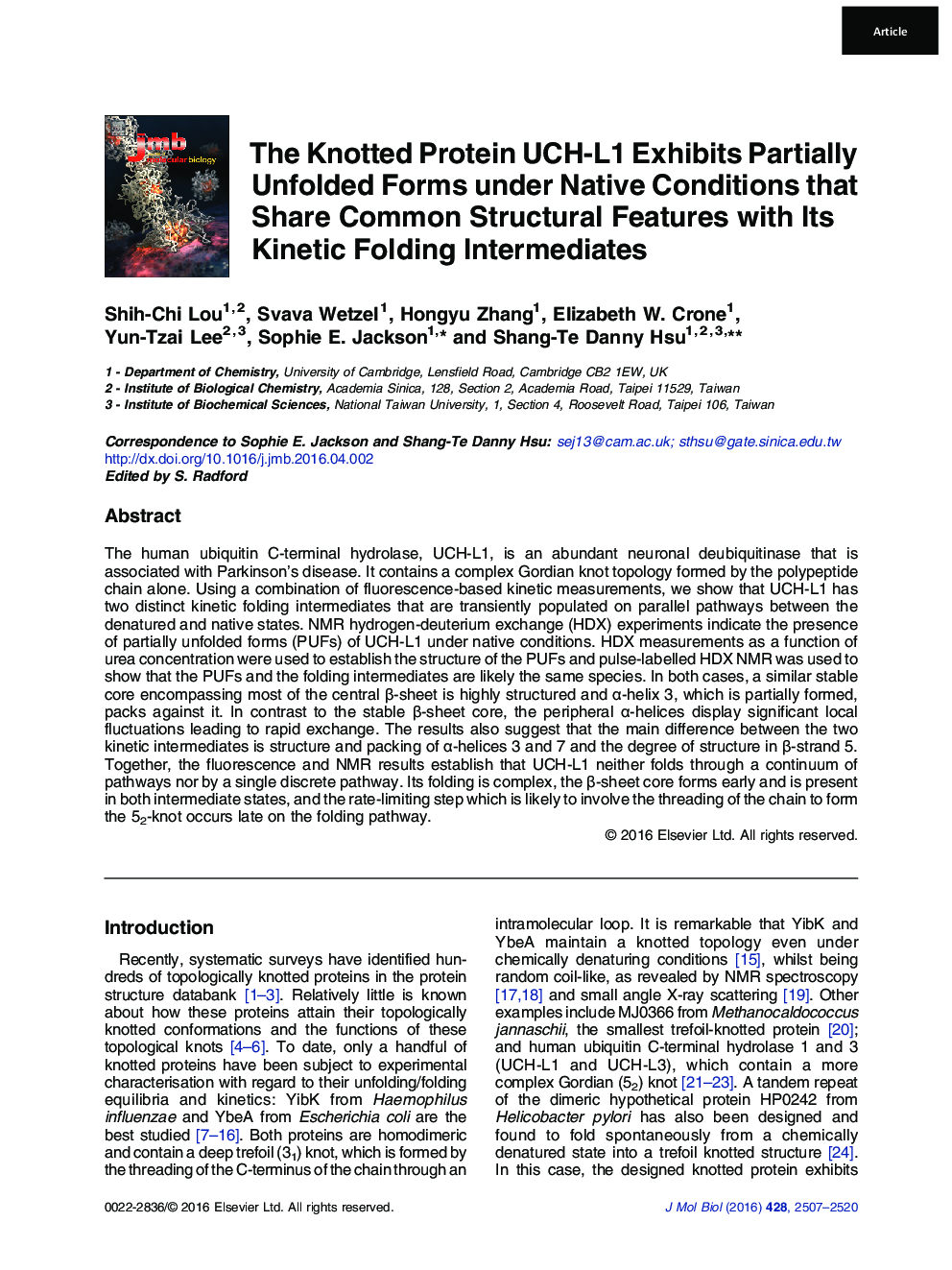| Article ID | Journal | Published Year | Pages | File Type |
|---|---|---|---|---|
| 2184358 | Journal of Molecular Biology | 2016 | 14 Pages |
•UCH-L1 is an abundant neuronal 52-knotted protein implicated in Parkinson’s disease.•UCH-L1 exhibits parallel folding pathways with two distinct folding intermediates.•Highly populated partially unfolded forms (PUFs) were observed under native conditions.•The PUFs share similar structural features with the folding intermediates.•Perturbation of the PUFs of UCH-L1 could lead to increased aggregation propensity.
The human ubiquitin C-terminal hydrolase, UCH-L1, is an abundant neuronal deubiquitinase that is associated with Parkinson’s disease. It contains a complex Gordian knot topology formed by the polypeptide chain alone. Using a combination of fluorescence-based kinetic measurements, we show that UCH-L1 has two distinct kinetic folding intermediates that are transiently populated on parallel pathways between the denatured and native states. NMR hydrogen-deuterium exchange (HDX) experiments indicate the presence of partially unfolded forms (PUFs) of UCH-L1 under native conditions. HDX measurements as a function of urea concentration were used to establish the structure of the PUFs and pulse-labelled HDX NMR was used to show that the PUFs and the folding intermediates are likely the same species. In both cases, a similar stable core encompassing most of the central β-sheet is highly structured and α-helix 3, which is partially formed, packs against it. In contrast to the stable β-sheet core, the peripheral α-helices display significant local fluctuations leading to rapid exchange. The results also suggest that the main difference between the two kinetic intermediates is structure and packing of α-helices 3 and 7 and the degree of structure in β-strand 5. Together, the fluorescence and NMR results establish that UCH-L1 neither folds through a continuum of pathways nor by a single discrete pathway. Its folding is complex, the β-sheet core forms early and is present in both intermediate states, and the rate-limiting step which is likely to involve the threading of the chain to form the 52-knot occurs late on the folding pathway.
Graphical AbstractFigure optionsDownload full-size imageDownload high-quality image (138 K)Download as PowerPoint slide
